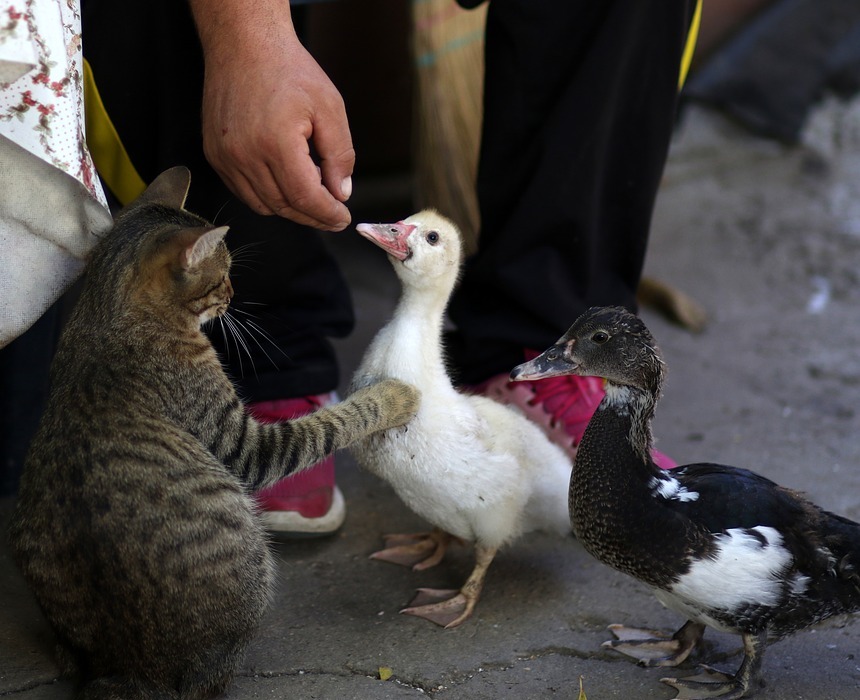Chocolate, a beloved treat for humans, poses a serious risk to our feline companions. This article will explore the potential dangers of chocolate consumption for cats, delving into the science behind the toxicity, the types of chocolate that pose the greatest risk, and the symptoms to watch out for. We'll also provide guidance on what to do if your cat has ingested chocolate, including when to seek emergency veterinary care. Finally, we'll address common questions regarding chocolate and cats, offering clear and concise answers to help you keep your feline companion safe.
Part 1: The Chocolate Danger

1.1 The Culprit: Theobromine
Chocolate contains a compound called theobromine, a methylxanthine alkaloid that acts as a stimulant. While humans can metabolise theobromine efficiently, cats lack the necessary enzymes to do so. This results in theobromine accumulating in their system, causing a range of toxic effects. Theobromine is a bitter compound that contributes to chocolate's flavour, and its concentration varies greatly depending on the type of chocolate.
1.2 Theobromine's Mechanism of Toxicity
Theobromine disrupts various physiological functions in cats, including:
- Cardiovascular System: It increases heart rate and can lead to irregular heartbeats, potentially causing heart failure in severe cases.
- Central Nervous System: Theobromine can stimulate the nervous system, causing hyperactivity, restlessness, tremors, and seizures.
- Digestive System: It can lead to vomiting, diarrhoea, and abdominal pain.
- Renal System: Theobromine can damage the kidneys, leading to kidney failure in severe cases.
1.3 Toxicity Levels Vary
The toxicity of chocolate for cats depends on several factors, including:
- Type of chocolate: Dark chocolate contains a much higher concentration of theobromine than milk chocolate or white chocolate. A single ounce of dark chocolate can be fatal to a small cat.
- Amount consumed: The more chocolate your cat ingests, the greater the risk of toxicity. Even a small amount of dark chocolate can cause severe symptoms in a small cat.
- Size of the cat: Smaller cats are more susceptible to chocolate poisoning than larger cats, as they have a lower tolerance for theobromine. A cat weighing 4kg will be more severely affected by the same amount of chocolate than a cat weighing 8kg.
Part 2: The Symptoms of Chocolate Toxicity

2.1 Early Signs
Early signs of chocolate poisoning in cats can be subtle and may be easily mistaken for other ailments. It's crucial to be observant and seek veterinary attention if you notice any of the following:
- Increased thirst
- Increased urination
- Restlessness
- Hyperactivity
- Vomiting
- Diarrhoea
- Panting
- Muscle weakness
- Increased salivation
2.2 Severe Symptoms
If left untreated, chocolate poisoning can progress to more severe symptoms, indicating a medical emergency:
- Muscle tremors
- Seizures
- Heart arrhythmias
- Coma
- Death
Part 3: What to Do If Your Cat Eats Chocolate

3.1 Assess the Situation
If you suspect your cat has eaten chocolate, act quickly and follow these steps:
- Identify the type and amount of chocolate consumed. This will help your veterinarian determine the severity of the potential poisoning. Try to gather any remaining chocolate wrappers or evidence to aid in identifying the chocolate type.
- Observe your cat for any symptoms of poisoning. Note the onset and progression of any symptoms.
3.2 Contact Your Veterinarian
Call your vet immediately, even if your cat is not showing symptoms. They will be able to assess the situation and advise you on the best course of action. Be prepared to provide them with information about the type and amount of chocolate consumed, your cat's weight, and any symptoms your cat is exhibiting.
3.3 Emergency Veterinary Care
If your cat is displaying severe symptoms, such as seizures, coma, or difficulty breathing, seek immediate emergency veterinary care. Don't delay. Time is of the essence in treating chocolate toxicity.
Part 4: Types of Chocolate and Toxicity Levels
4.1 Dark Chocolate: Highest Risk
Dark chocolate contains the highest concentration of theobromine, making it the most dangerous for cats. Even small amounts can cause severe symptoms, and a single ounce can be fatal to a small cat. Avoid giving your cat any dark chocolate, including dark chocolate baking chips.
4.2 Milk Chocolate: Moderate Risk
Milk chocolate has a lower theobromine content than dark chocolate, but it still poses a risk to cats, especially if consumed in larger quantities. A few pieces of milk chocolate can cause mild symptoms, while a larger amount can lead to more serious health problems. Avoid giving your cat any milk chocolate.
4.3 White Chocolate: Lowest Risk
White chocolate generally contains very little theobromine, and is considered the safest for cats. However, it's still best to err on the side of caution and avoid giving your cat any chocolate. White chocolate may contain other ingredients, like artificial sweeteners, that could be harmful to your cat.
Part 5: Prevention is Key
5.1 Keep Chocolate Out of Reach
Store all chocolate products in airtight containers, preferably high up and out of your cat's reach. Cats are known for their agility and curious nature, so don't underestimate their ability to find hidden treats.
5.2 Be Mindful of Leftovers
Dispose of chocolate wrappers and leftover chocolate carefully, ensuring your cat cannot access them. Place wrappers in a secure bin with a lid, and dispose of leftover chocolate in a way that prevents your cat from accessing it.
5.3 Educate Others
If other people visit your home, inform them about the dangers of chocolate to cats and ask them to keep their chocolate out of reach. Encourage guests to store their chocolate in secure places where your cat cannot access it.
Part 6: Chocolate Alternatives for Cats
There are numerous delicious and safe treats available specifically designed for cats. These alternatives often come in a variety of flavours and textures, catering to your feline friend's preferences. Consult with your veterinarian or a pet store professional to find suitable alternatives.
Part 7: The Science Behind the Toxicity
7.1 Theobromine and Its Effects
Theobromine acts as a stimulant in cats, affecting the heart, central nervous system, and kidneys. It can lead to increased heart rate, irregular heartbeat, tremors, seizures, and even organ damage.
7.2 Metabolism and Accumulation
Cats lack the enzymes necessary to efficiently break down theobromine, causing it to accumulate in their system. This accumulation can lead to a build-up of toxins, causing the symptoms of chocolate poisoning. The longer theobromine remains in the body, the more severe the effects become.
Part 8: FAQs
8.1 Q: What if my cat licks a bit of chocolate?
A: If your cat has licked a small amount of chocolate, especially if it's white chocolate, it's unlikely to cause significant harm. However, monitor your cat for any signs of illness and contact your vet if you have any concerns.
8.2 Q: Can cats eat chocolate chip cookies?
A: Chocolate chip cookies are a definite no-no for cats. The chocolate chips contain theobromine, which is toxic to cats.
8.3 Q: How long does it take for chocolate poisoning to show symptoms?
A: Symptoms of chocolate poisoning can appear within 6 to 12 hours of ingestion. However, in some cases, symptoms may not develop for up to 24 hours. Monitor your cat closely for any changes in behavior or health.
8.4 Q: Is baking chocolate more dangerous than milk chocolate?
A: Yes, baking chocolate contains the highest concentration of theobromine, making it the most dangerous type of chocolate for cats. Avoid giving your cat any baking chocolate, even in small amounts.
8.5 Q: What can I give my cat to induce vomiting?
A: It's crucial to contact your veterinarian before inducing vomiting in your cat. They will be able to determine if inducing vomiting is safe and appropriate in your cat's specific situation. Never attempt to induce vomiting without professional guidance.
8.6 Q: Can I give my cat activated charcoal to treat chocolate poisoning?
A: Activated charcoal is sometimes used to absorb toxins in the digestive system. However, it's important to consult with your veterinarian before giving your cat activated charcoal. They will advise you on the proper dosage and administration.
Conclusion
Theobromine, found in chocolate, is toxic to cats and can lead to serious health issues. It's crucial to keep chocolate out of reach of your feline companion. If your cat has ingested chocolate, contact your vet immediately for guidance. With vigilance and preventative measures, you can ensure your cat remains safe and healthy.
Everyone is watching
-

Are Cat Ribs Flexible? Understanding Their Anatomy
CATS & KITTENSThis article delves into the fascinating world of feline anatomy, exploring the flexibility of cat ribs and ho...
-

Can Cats Eat Bananas? (Everything You Need to Know)
CATS & KITTENSThis article dives into the intriguing question of whether cats can safely enjoy the sweet, yellow fruit, bana...
-

Cat Lifespan: How Long Do Cats Live?
CATS & KITTENSThis comprehensive guide explores the factors influencing the lifespan of our feline companions, providing ins...
-

Can Cats Get COVID-19? What You Need to Know
CATS & KITTENSThis article will delve into the fascinating world of feline COVID-19 susceptibility. We'll explore whether ca...
-

Can Cats Eat Eggs? A Complete Guide to Egg Safety for Your Feline Friend
CATS & KITTENSWhen it comes to treating our furry companions, we all want to ensure we're doing what's best for them. Eggs...
